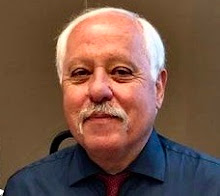The theme for the 2014 PRSA International Conference in
Washington, D.C. was “Leading The Way: A Fearless Future for PR," though it
could have been subtitled “To Boldly Go Where No One Has Gone Before.” Changes
in communication technology continue to hurtle the field of public relations
into new dimensions at lightning speed.
The annual conference is held in tandem with the Public
Relations Student Society of America, so students from the University of Oregon
chapter of PRSSA were in attendance for sessions at their hotel, The Omni, and
for the keynote presentations at the 2014 PRSA International Conference at
the adjacent Marriott Wardman Park.
For me, the conference began just as I arrived at the
Marriott, joining my colleagues from other chapters in the PRSA North Pacific
District for dinner at a nearby eatery on trendy Connecticut Avenue. Many of us
would rise early the next morning for the PRSA Leadership Assembly, which
promised to be livelier than usual this year.
This assembly included a bylaw amendment to designate
two board slots as non-accredited positions, rather controversial because of
ongoing efforts to promote the Accredited in Public Relations (APR)
designation, and a floor challenge from a candidate vying with the nominee
recommended by the PRSA National Nominating Committee.
The conference traditionally has stellar keynoters: “Good
Morning America” news anchor Amy Robach; author Walter Isaacson; magazine editor
Polly LaBarre; and “Meet the Press” moderator Chuck Todd. As an aside, the late
Tim Russert, a former “Meet the Press” moderator, was a keynoter at the 2007 conference in Philadelphia
Isaacson, a former chairman and CEO of CNN and Managing
Editor of Time Magazine, has penned biographies of Steve Jobs, Benjamin Franklin,
Albert Einstein and Henry Kissinger. He emphasized that most innovations are
the result of working together collaboratively on a team. “You know this;
this is what you do every day.”
LaBarre, editor at MIX magazine, says it’s “not about old media or new media but about filling the space between you and your audience.” She advised engaging others in seeking innovation: “Invite a weirdo to lunch.” I like the sound of that; perhaps I’ll start receiving more luncheon invitations from my colleagues.
Todd recently assumed the reins of “Meet the Press,” the
longest running show in the history of television. Despite being an election
year, he says, many politicians don’t practice the art of politics, and we have
“a system where gridlock is the easiest way.” Unfortunately, he says,
“pragmatism and compromise are seen as vices, not virtues.”
Breakout sessions ranged from tools and
techniques to strategy and measurement. 2014 Chair Joe Cohen, APR, summed up
the focus of the conference, saying that “in today’s media environment,
constant change is the norm, and public relations professionals must work
harder than ever to stay at the top of their game.”














